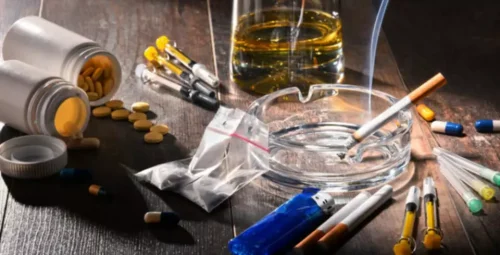
When alcohol is consumed, it causes the blood vessels to relax and expand, resulting in a temporary increase in blood flow. However, it’s important to note that this is a misconception and does not reflect the true nature of blood thickness. There is a common belief that consuming alcohol can thin the blood, leading to various misconceptions and concerns. In this section, we will delve into the topic and separate fact from fiction surrounding the relationship between alcohol and blood thickness.
Alcohol’s Effects on Blood Pressure and Incident Hypertension

By Geralyn Dexter, PhD, LMHCDexter has a doctorate in psychology and is a licensed mental health counselor with a focus on suicidal ideation, self-harm, and mood disorders. Every state in the U.S. has a legal limit (or a point at which it is legally unsafe to operate a motor vehicle) of 0.08%. It’s important to note that any amount of alcohol in your system can interfere with your ability to think and function without impairment. Alcohol use suppresses the central nervous system and destroys neurons.
What Else Raises Blood Pressure?

While alcohol can cause temporary dilation of blood vessels, resulting in a warm sensation, it does not actually improve overall blood circulation in the long term. In fact, excessive alcohol consumption can have negative effects on cardiovascular health. By understanding the effects of alcohol on blood clotting, individuals can make informed decisions about their alcohol consumption and prioritize their overall health and well-being. The process of blood clotting involves several key components, including platelets, proteins called clotting factors, and fibrin.
Immediate Effects
Ultimately, consuming alcohol can pose a risk to your health and the health of others. Planning ahead for designated drivers, keeping track of your alcohol intake, and finding ways to drink less can all help make your nights out safer. People who have any level of alcohol dependence should ideally try to abstain from alcohol for 6–8 weeks before surgery to decrease the risks of potentially fatal complications. Drinking more than two drinks per day can increase the risks of various postoperative complications. Long-term alcohol use can affect the functioning of the liver, which could mean doctors need to adjust the dose of anesthesia they would typically use. This could affect the efficacy and safety of anesthesia during surgery.
Alcohol and its Effects on the Heart
They recommended confirming these results in younger women and in men, particularly since their subjects had been older women, who have more significant cardiovascular risk. Through the process of oxidative phosphorylation, the mitochondria generate ~90 percent of cellular ATP. In cardiomyocyte mitochondria as well as other mitochondrial types, such imbalances could lead to further decreases in cellular respiration and oxidative phosphorylation. More contemporary studies have not found evidence of mitochondrial injury in biopsy samples from long-term alcohol drinkers (Miró et al. 2000). Differences among results from human studies may relate to small sample sizes, duration of drinking, and degree of myocardial dysfunction.
What Are the Effects of Drinking Alcohol on the Blood?
- If you take blood thinners and wish to consume alcohol, speak to your healthcare provider first.
- Since the level of this compound in licorice tea can vary, it’s not possible to give a recommendation of a safe amount to consume.
- New research has found that moderate consumption, meaning one or two drinks per day, can decrease cardiovascular disease risk.
- The single most important thing you can do is to be completely open about your alcohol use.
- More contemporary studies have not found evidence of mitochondrial injury in biopsy samples from long-term alcohol drinkers (Miró et al. 2000).
This risk normally isn’t a big deal, but it can be depending on your health status and how much you drink. One of the problems with alcohol being a blood thinner is that drinking also increases your risk of falling or being in an accident. If you fall and injure yourself while drinking, you’re likely to bleed more than you would have if you were sober. A healthcare provider called a phlebotomist usually performs blood draws, including those for a blood alcohol content test, but any healthcare provider who is trained in drawing blood can perform this task.
How many drinks is 0.08?
- Antioxidants called polyphenols, of which resveratrol is one, may aid in the protection of the lining of blood vessels within the heart as well.
- One of the oldest blood thinners still in widespread use is warfarin (Coumadin).
- One of the key implications of alcohol’s impact on blood clotting is the potential for increased bleeding.
- Haley received her Master of Social Work from the University of Texas-Arlington.
- One of the first and most important risks of using alcohol is that it can make you more prone to excessive bleeding while you’re intoxicated.
Alcohol consumption may decrease the amount of fibrinogen in the blood. The liver produces this protein, which plays an important role in controlling blood flow and promoting blood clotting. Consuming alcohol before surgery is a significant risk because it can thin your blood. Alcohol consumption can lead to severe complications both during and after surgery. It can result in a longer hospital stay and an extended recovery time. Thick blood (hypercoagulability) stops oxygen, hormones, and nutrients from moving smoothly throughout your body.

Herbal Teas to Avoid If You Have High Blood Pressure, According to Dietitians
Data on this tea is extremely limited and suggests that it may be linked to heart attacks and seizures. It’s best to avoid this tea—even if you don’t have high blood pressure—until more data is available. For people who drink several times a week and do not have alcohol dependency, even slightly reducing does alcohol thin blood intake can have significant health benefits, Keyes added. There are two main reasons why alcohol should not be mixed with blood thinners. First, alcohol and blood thinners can have similar effects, so you might get too much of an effect, which can be just as harmful as not taking your medication.
- If you or someone you know is drinking alcohol, despite being on blood thinners and finding it difficult to stop on your own, speak to your doctor.
- If you have low blood platelet levels, it’s known as thrombocytopenia, or “thin blood.” It’s not always usually a cause for concern but can be a sign of an underlying condition.
- “Some people think of the effects of alcohol as only something to be worried about if you’re living with alcohol use disorder, which was formerly called alcoholism,” Dr. Sengupta says.
- Long-term, excessive drinking can decrease your heart’s ability to function correctly.
- The safest way to avoid complications is to refrain from exceeding the recommended daily intake of alcohol.
What can happen if you drink alcohol before surgery
25.8% of people classified their recent consumption habits as binge drinking (excessive drinking in a defined amount of time). A person needs to speak with a doctor about taking blood thinners safely. Consuming alcohol leads to a lower number of blood platelets because the substance hinders the bone marrow’s ability to produce these cells. It also changes their physical makeup, making them less sticky and therefore less able to stick together and form a clot.
Is alcohol good for blood pressure in small amounts?
INTERHEART results also suggested that the protective effect of any alcohol use against MI was greater in women and those over age 45. Finally, data from INTERHEART support the finding that the risk of MI is increased in the 24 hours after consumption of 6 or more drinks, suggesting that binge drinking increases MI risk (table 1). Another trend in recent studies of alcohol and CV risk and disease is to include a measurement for binge drinking. In most investigations, this means consuming more than 5 standard drinks on a single occasion for men and more than 4 standard drinks for women. NIAAA defines binge drinking as a pattern of drinking alcohol that brings the blood alcohol concentration to 0.08 percent or above. A typical adult consuming the defined number of standard drinks for binge drinking would reach a blood alcohol concentration of 0.08 in about 2 hours (NIAAA 2015b).
